A research profile on internal audit quality
DOI:
https://doi.org/10.19094/contextus.2022.72469Keywords:
internal audit activity, internal audit quality, Sarbanes-Oxley Act, research profile, bibliometric profileAbstract
Gaps in internal audit function (IAF), such as internal audit quality (IAQ), began to be pointed out by studies carried out after Sarbanes-Oxley (SOX) Act publication. As a subject still under development in the literature, this article seeks to delineate a research profile for the IAQ in the period from 1999 to 2021. To this end, a bibliometric profile on the subject was conducted, resulting in the identification of how the research area has progressed over the last 22 years, encompassing research clusters, main fields of study and citations networks. As a result, two maps were created: one based on text data and one based on bibliographic data.
Downloads
References
Abbott, L. J., Parker, S., Peters, G. F., & Rama, D. V. (2007). Corporate Governance, Audit Quality, and the Sarbanes-Oxley Act: Evidence from Internal Audit Outsourcing. The Accounting Review, 82(4), 803-835. http://www.jstor.org/stable/30243479
Abbott, L., Parker, S., & Peters, G. (2010). Serving Two Masters: The Association between Audit Committee Internal Audit Oversight and Internal Audit Activities. Accounting Horizons. 24(1), 1-24. https://doi.org/10.2308/acch.2010.24.1.1
Abbott, L. J., Parker, S., & Peters, G. F. (2012a). Audit Fee Reductions from Internal Audit‐Provided Assistance: The Incremental Impact of Internal Audit Characteristics. Contemporary Accounting Research, 29(1), 94-118. https://doi.org/10.1111/j.1911-3846.2011.01072.x
Abbott, L. J., Parker, S., & Peters, G. F. (2012b), Internal audit assistance and external audit timeliness. Auditing: A Journal of Practice & Theory, 34(4), 3-20. https://doi.org/10.1111/j.1911-3846.2011.01072.x
Abbott, L. J., Daugherty, B., Parker, S., & Peters, G. F. (2016). Internal Audit Quality and Financial Reporting Quality: The Joint Importance of Independence and Competence. Journal of Accounting Research, 54(1), 3-40. https://doi.org/10.1111/1475-679X.12099
Abdallah, A. S., Majeed, M. Z., & Hamzah, A. M. (2021). Measuring the impact of governance pillars on the auditing quality. Academy of Strategic Management Journal, 20(2S), 1-7. https://www.abacademies.org/articles/measuring-the-impact-of-governance-pillars-on-the-auditing-quality-11334.html
Abdolmohammadi, M. (2012). Chief audit executives’ assessment of internal auditors’ performance attributes by professional rank and cultural cluster. Behavioral Research in Accounting, 24(1), 1-23. https://doi.org/10.2308/bria-50023
Abdolmohammadi, M. (2013). Correlates of co-sourcing/outsourcing of internal audit activities. Auditing: A Journal of Practice & Theory, 32(3), 69-85. https://doi.org/10.2308/ajpt-50453
Alaraji, F. A. A. S. (2020). Corporate governance and its impact on the quality of internal audit. Quality - Access to Success, 21(175), 85-90. https://www.proquest.com/openview/a5652d78da7ce6518867e9f164279262/1?pq-origsite=gscholar&cbl=1046413
Alzeban, A., & Gwilliam, D. (2014). Factors affecting the internal audit effectiveness: A survey of the Saudi public sector. Journal of International Accounting, Auditing and Taxation, 23(2), 74-86. https://www-sciencedirect.ez108.periodicos.capes.gov.br/science/article/pii/S1061951814000214
Anderson, U., Christ, M., Johnstone, K., & Rittenberg, L. (2012). A Post-SOX Examination of Factors Associated with the Size of the Internal Audit Functions. Accounting Horizons, 26(2), 167-91. https://doi.org/10.2308/acch-50115
Archambeault, D. S., DeZoort, F. T., & Holt, T. P. (2008). The need for an internal auditor report to external stakeholders to improve governance transparency. Accounting Horizons, 22(4), 375-389. https://doi.org/10.2308/acch.2008.22.4.375
Aria, M., & Cuccurullo, C. (2017). Bibliometrix: An R-tool for comprehensive science mapping analysis. Journal of Informetrics, 11(4), 959-975. https://doi.org/10.1016/j.joi.2017.08.007
Asare, S., Davidson, R., & Gramling, A. (2008). Internal auditors’ evaluation of fraud factors in planning an audit: The importance of audit committee quality and management incentives. International Journal of Auditing, 12(3), 181-203. https://papers.ssrn.com/sol3/papers.cfm?abstract_id=1292985
Asiedu, K. F., & Deffor, E. W. (2017) Fighting Corruption by Means of Effective Internal Audit Function: Evidence from the Ghanaian Public Sector. International Journal of Auditing, 21(1), 82-99. http://doi.wiley.com/10.1111/ijau.12082
Bame-Aldred, C., Brandon, D., Messier, B., Rittenberg, L., & Stefaniak, C. M. (2012). A Summary of Research on External Auditor Reliance on the Internal Audit Function. Auditing: A Journal of Practice and Theory, 32, 251-86. https://doi.org/10.2308/ajpt-50342
Bartlett, G. D., Kremin, J., Saunders, K. K., & Wood, D. A. (2016). Attracting applicants for in-house and outsourced internal audit positions: Views from external auditors. Accounting Horizons, 30(1), 143-156. https://doi.org/10.2308/acch-51309
Bartlett, G. D., Kremin, J., Saunders, K. K., & Wood, D. A. (2017). Factors influencing recruitment of non-accounting business professionals into internal auditing. Behavioral Research in Accounting, 29(1), 119-130. https://doi.org/10.2308/bria-51643
Bhattacharjee, S., Maletta, M. J., & Moreno, K. K. (2016). The role of account subjectivity and risk of material misstatement on auditors’ internal audit reliance judgments. Accounting Horizons, 30(2), 225-38. https://doi.org/10.2308/acch-51363
Bhattacharjee, S., Maletta M. J., & Moreno, K. K. (2017). Audit reviewers’ judgments in multiple client audit environments. Behavioral Research in Accounting, 29(2), 1-9. https://doi.org/10.2308/bria-51788
Boyle, D. M., DeZoort, F. T., & Hermanson, D. R. (2015). The effects of internal audit report type and reporting relationship on internal auditors’ risk judgments. Accounting Horizons, 29(3), 695-718. https://doi.org/10.2308/acch-51110
Brandon, D. (2020). External auditor evaluations of outsourced internal auditors. Auditing: A Journal of Practice & Theory, 29(2), 159-173. https://doi.org/10.2308/aud.2010.29.2.159
Brown, P. R. (1983). Independent auditor judgment in the evaluation of internal audit functions. Journal of Accounting Research, 21(2), 444-455. https://www.jstor.org/stable/2490784?seq=1
Burnaby, P., & Hass, S. (2009). A summary of the global common body of knowledge 2006 (CBOK) study in internal auditing. Managerial Auditing Journal, 24(9), 813-834. https://doi.org/10.1108/02686900910994782
Burton, F. G., Starliper, M. W., Summers, S. L., & Wood, D. A. (2015). The effects of using the internal audit function as a management training ground or as a consulting services provider in enhancing the recruitment of internal auditors. Accounting Horizons, 29(1), 115-140. https://doi.org/10.2308/acch-50925
Carcello, J. V., Hermanson, D. R., & Raghunandan, K. (2005). Factors associated with U.S. public companies’ investment in internal auditing. Accounting Horizons, 19(2), 69-84. https://doi.org/10.2308/acch.2005.19.2.69
Chen, L. H., Chungm, H. H., Peters, G. F., & Wynn, J. P. (2017). Does incentive-based compensation for chief internal auditors impact objectivity? An external audit risk perspective. Auditing: A Journal of Practice & Theory, 36(2), 21-43. https://doi.org/10.2308/ajpt-51575
Christ, M. H., Masli, A., Sharp, N. Y., & Wood, D. A. (2015). Rotational Internal Audit Programs and Financial Reporting Quality: Do Compensating Controls Help? Accounting, Organizations and Society, 44, 37-59. https://doi.org/10.1016/j.aos.2015.05.004
Christopher, J., Sarens, G., & Leung, P. (2009). A critical analysis of the independence of the internal audit function: evidence from Australia. Accounting, Auditing & Accountability Journal, 22(2), 200-220. https://doi.org/10.1108/09513570910933942
Coetzee, P., & Lubbe, D. (2014). Improving the efficiency and effectiveness of risk-based internal audit engagements. International Journal of Auditing, 18(2), 115-125. https://papers.ssrn.com/sol3/papers.cfm?abstract_id=2449082
Coram, P., Ferguson, C., & Moroney, R. (2008). Internal audit, alternative internal audit structures and the level of misappropriation of assets fraud. Accounting and Finance, 48(4), 543-539. https://doi.org/10.1111/j.1467-629X.2007.00247.x
Davidson, B. I., Desai, N. K., & Gerard, G. J. (2013). The effect of continuous auditing on the relationship between internal audit sourcing and the external auditor’s reliance on the internal audit function. Journal of Information Systems, 27(1), 41-59. https://doi.org/10.2308/isys-50430
Davies, M. (2009). Effective working relationships between audit committees and internal audit - the cornerstone of corporate governance in local authorities, a Welsh perspective. Journal of Management & Governance, 13(1-2), 41-73. https://doi.org/10.1007/s10997-008-9070-9
Desai, V., Roberts, R., & Srivastava, R. (2010). An analytical model for external auditor evaluation of the internal audit function using belief functions. Contemporary Accounting Research, 27(2), 537-575. https://doi.org/10.1111/j.1911-3846.2010.01023_4.x
Desai, N. K., Gerard, G. J., & Tripathy, A. (2011). Internal audit sourcing arrangements and reliance by external auditors. Auditing: A Journal of Practice & Theory, 30(1), 149-71. https://doi.org/10.2308/aud.2011.30.1.149
Dezoort, F. T., Houston, R. W., & Peters, M. F. (2001). The impact of internal auditor compensation and role on external auditors’ planning judgments and decisions. Contemporary Accounting Research, 18(2), 257-281. https://doi.org/10.1506/7ERQ-LD54-BTQV-TUVE
De Zwaan, L., Stewart, J., & Subramaniam, N. (2011). Internal audit involvement in enterprise risk management. Managerial Auditing Journal, 26(7), 586-604. https://doi.org/10.1108/02686901111151323
D’Onza, G., Selim, G. M., Melville, R., & Allegrini, M. (2015). A study on internal auditor perceptions of the function ability to add value. International Journal of Auditing, 19(3), 182-94. https://doi.org/10.1111/ijau.12048
Ege, M. S. (2015). Does internal audit function quality deter management misconduct? The Accounting Review, 90(2), 495-527. https://doi.org/10.2308/accr-50871
Everett, J., & Tremblay, M. S. (2014). Ethics and internal audit: moral will and moral skill in a heteronomous field. Critical Perspectives on Accounting, 25(3), 181-196. https://doi.org/10.1016/j.cpa.2013.10.002
Farkas, M. J., & Hirsch, R. M. (2016). The effect of frequency and automation of internal control testing on external auditor reliance on the internal audit function. Journal of Information Systems, 30(1), 21-40. https://doi.org/10.2308/isys-51266
Felix, W., Gramling, A., & Maletta M. J. (2001). The contribution of internal audit as a determinant of external audit fees and factors influencing this contribution. Journal of Accounting Research, 39(3), 513-534. https://doi.org/10.1111/1475-679X.00026
Felix, W., Gramling, A., & Maletta M.J. (2005). The influence of nonaudit service revenues and client pressure on external auditors' decisions to rely on internal audit. Contemporary Accounting Research, 22(1), 31-53. https://doi.org/10.1506/JN7X-B51L-V45W-4U7R
Glover, S. M., Prawitt, D. F., & Wood, D. A. (2008). Internal audit sourcing arrangement and the external auditor’s reliance decision. Contemporary Accounting Research, 25(1), 193-213. https://doi.org/10.1506/car.25.1.7
Gonthier-Besacier, N., Hottegindre, G., & Fine-Falcy, S. (2016). Audit Quality Perception: Beyond the ‘Role-Perception Gap’. International Journal of Auditing, 20(2), 186-201. http://doi.wiley.com/10.1111/ijau.12066
Gramling, A. A., Maletta, M. J., Schneider, A., & Church, B. K. (2004). The role of the internal audit function in corporate governance: a synthesis of the extant internal auditing literature and directions for future research. Journal of Accounting Literature, 23, 194-244. https://www.researchgate.net/publication/284061551
Gramling, A. A., & Myers, P. M. (2006). Internal auditing’s role in ERM: as organizations lay their enterprise risk groundwork, many auditors are taking on management's oversight responsibilities, new research finds. The Internal Auditor, 63(2), 52, 56-58. https://www.researchgate.net/publication/311561680
Gramling, A. A., & Vandervelde, S. D. (2006). Assessing internal audit quality. Internal Auditing, 21(3), 26-33. https://digitalcommons.kennesaw.edu/facpubs/1332/
Gras-Gil, E., Marin-Hernandez, S., & Garcia-Perez de Lema, D. (2012). Internal audit and financial reporting in the Spanish banking industry. Managerial Auditing Journal, 27(8), 728-753. https://doi.org/10.1108/02686901211257028
Guo, Y., Huang, L., & Porter, A. L. (2010). The research profiling method applied to nano-enhanced, thin-film solar cells. R and D Management, 40(2), 195-208. https://doi.org/10.1111/j.1467-9310.2010.00600.x
Holt, T. P. (2012). The effects of internal audit role and reporting relationships on investor perceptions of disclosure credibility. Managerial Auditing Journal, 27(9), 878-898. https://doi.org/10.1108/02686901211263085
Holt, T. P., & DeZoort, T. (2009). The effects of internal audit report disclosure on investor confidence and investment decisions. International Journal of Auditing, 13(1), 61-77. https://doi.org/10.1111/j.1099-1123.2008.00391.x
Instituto Brasileiro de Governança Corporativa. (2018). Auditoria Interna: Aspectos Essenciais para o Conselho de Administração. IBGC Orienta. São Paulo: IBGC. https://d335luupugsy2.cloudfront.net/cms/files/43769/1544470760AuditoriaInterna_-_2018.pdf
Ismael, H. R., & Kamel, H. (2021). Internal audit quality and earnings management: evidence from the UK. Managerial Auditing Journal, 36(7), 951-978. https://doi.org/10.1108/MAJ-09-2020-2830
Issa, H., & Kogan, A. (2014). A predictive ordered logistic regression model as a tool for quality review of control risk assessments. Journal of Information Systems, 28(2), 209-229. https://doi.org/10.2308/isys-50808
Johl, K. S., Kaur Johl, S., Subramaniam, N., & Cooper, B. (2013). Internal audit function, board quality and financial reporting quality: Evidence from Malaysia. Managerial Auditing Journal, 28(9), 780-814. https://doi.org/10.1108/MAJ-06-2013-0886
Kaplan, S. E. (2007). Intentions to report questionable acts: An examination of the influence of anonymous reporting channel, internal audit quality, and setting. Journal of Business Ethics, 71(2), 109-124. https://doi.org/10.1007/s10551-006-0021-6
Kaawaase, T. K., Nairuba, C., Akankunda, B., & Bananuka, J. (2021). Corporate governance, internal audit quality and financial reporting quality of financial institutions. Asian Journal of Accounting Research, 6(3), 348-366. https://doi.org/10.1108/AJAR-11-2020-0117
Knechel, W. R., Krishnan, G., Peyzner, M., Shefchik, L. B., Velury, U. (2013). Audit Quality: Insights from the Academic Literature. Auditing: A Journal of Practice & Theory, 32, 385-421. https://doi.org/10.2308/ajpt-50350
Krichene, A., & Baklouti, E. (2021). Internal audit quality: perceptions of Tunisian internal auditors an explanatory research. Journal of Financial Reporting and Accounting, 19(1), 28-54. https://doi.org/10.1108/JFRA-01-2020-0010
Lesage, C., & Ben Saab, E. (2009). Perception de l’indépendance de l’auditeur: analyse par la théorie d’attibution. La place de la dimension européenne dans la Comptabilité Contrôle Audit. https://halshs.archives-ouvertes.fr/halshs-00460618
Lin, S., Pizzini, M., Vargus, M., & Bardhan, I. (2011). The role of the internal audit function in the disclosure of material weaknesses. The Accounting Review, 86(1), 287-323. https://doi.org/10.2308/accr.00000016
Malaescu, I., & Sutton, S. G. (2015). The reliance of external auditors on internal audit’s use of continuous audit. Journal of Information Systems, 29(1), 95-114. https://doi.org/10.2308/isys-50899
Mat Zain, M., & Subramaniam, N. (2007). Internal auditor perceptions on audit committee interactions: A qualitative study in Malaysian public corporations. Corporate Governance: An International Review, 15(5), 894-908. https://doi.org/10.1111/j.1467-8683.2007.00620.x
Mat Zain, M., Zaman, M., & Mohamed, Z. (2015). The Effect of Internal Audit Function Quality and Internal Audit Contribution to External Audit on Audit Fees. International Journal of Auditing, 19(3), 134-147. https://doi.org/10.1111/ijau.12043
Mattei, G., Grossi, G., & Guthrie A. M. J. (2021). Exploring past, present and future trends in public sector auditing research: a literature review. Meditari Accountancy Research, 29(7), 94-134. https://doi.org/10.1108/MEDAR-09-2020-1008
Mazza, T., & Azzali, S. (2015). Effects of internal audit quality on the severity and persistence of controls deficiencies. International Journal of Auditing, 19(3), 148-165. https://doi.org/10.1111/ijau.12044
Messier, W. F., & Schneider, A. (1988). A hierarchical approach to the external auditor’s evaluation of the internal auditing function. Contemporary Accounting Research, 4(2), 337-353. https://doi.org/10.1111/j.1911-3846.1988.tb00670.x
Messier, W. F., Reynolds, J. K., Simon, C. A., & Wood, D. A. (2011). The Effect of Using the Internal Audit Function as a Management Training Ground on the External Auditor’s Reliance Decision. The Accounting Review, 86, 2131-2154. https://doi.org/10.2308/accr-10136
Mihret, D. G., & Yismaw, A. W. (2007). Internal audit effectiveness: An Ethiopian public sector case study. Managerial Auditing Journal, 22(5), 470-484. https://doi.org/10.1108/02686900710750757
Mongeon, P., & Paul-Hus, A. (2016). The journal coverage of Web of Science and Scopus: a comparative analysis. Scientometrics, 106(1), 213-228. https://doi.org/10.1007/s11192-015-1765-5
Munro, L., & Stewart, J. (2010). External auditors’ reliance on internal audit: The impact of sourcing arrangements and consulting activities. Accounting and Finance, 50(2), 371-387. https://doi.org/10.1111/j.1467-629X.2009.00322.x
Munro, L., & Stewart, J. (2011). External auditors’ reliance on internal auditing: further evidence. Managerial Auditing Journal, 26(6), 461-481. https://doi.org/10.1108/02686901111142530
Norman, C., Rose, A., & Rose, J. (2010). Internal audit reporting lines, fraud risk decomposition, and assessments of fraud risk. Accounting, Organizations and Society, 35(5), 546-557. https://doi.org/10.1016/j.aos.2009.12.003
Neu, D., Everett, J., & Rahaman, A. S. (2013). Internal auditing and corruption within government: the case of the Canadian sponsorship program. Contemporary Accounting Research, 30(3), 1223-1250. https://doi.org/10.1111/j.1911-3846.2012.01195.x
Oliveira, U. R., Espíndola, L. S., & Marins, F. A. S. (2017). Perfil de pesquisa sobre gerenciamento de riscos em cadeias de suprimentos. Gestão & Produção, 25(4), 671-695. https://doi.org/10.1590/0104-530x3515-16
Oliveira, U. R., Espíndola, L. S., Silva, I. R, Silva, I. N., & Rocha, H. M. (2018). A systematic literature review on green supply chain management: Research implications and future perspectives. Journal of Cleaner Production, 187, 537-561. https://doi.org/10.1016/j.jclepro.2018.03.083
Omar, H. M. H., & Stewart, J. (2015). The effect of incentive-based compensation on internal auditors’ perceptions of objectivity. International Journal of Auditing, 19(1), 37-52. https://doi.org/10.1111/ijau.12032
Perianes-Rodriguez, A., Waltman, L., & Van Eck, N. J. (2016). Constructing bibliometric networks: A comparison between full and fractional counting. Journal of Informetrics, 10(4), 1178-1195. https://doi.org/10.1016/j.joi.2016.10.006
Pike, B. J., Chui, L., Martin, K. A., & Olvera, R. M. (2015). External auditors’ involvement in the internal audit function’s work plan and subsequent reliance before and after a negative audit discovery. Auditing: A Journal of Practice & Theory, 35(4), 159-173. https://doi.org/10.2308/ajpt-51486
Pizzini, M., Lin, S., & Ziegenfuss, D. E. (2015). The Impact of Internal Audit Function Quality and Contribution on Audit Delay. Auditing: A Journal of Practice & Theory, 34(1), 25-58. https://doi.org/10.2308/ajpt-50848
Porter, A. L., Kongthon, A., & Jye-Chyi, L. (2002). Research profiling Improving the literature review. Scientometrics, 53(3), 351-370. https://doi.org/10.1023/A:1014873029258
Prat Dit Hauret, C. (2003). L’indépendance du commissaire aux comptes: Une analyse empirique fondée sur trois composantes psychologiques du comportement. Comptabilité Contrôle Audit, 9(2), 31-58. https://www.cairn.info/revue-comptabilite-controle-audit-2003-2-page-31.htm?contenu=resume#
Prawitt, D. F., Sharp, N. Y., & Wood, D. A. (2011). Reconciling Archival and Experimental Research: Does Internal Audit Contribution Affect the External Audit Fee? Behavioral Research in Accounting, 23, 187-206. https://doi.org/10.2308/bria-10065
Prawitt, D. F., Sharp, N. Y., & Wood, D. A. (2012). Internal audit outsourcing and the risk of misleading or fraudulent financial reporting: Did Sarbanes-Oxley get it wrong? Contemporary Accounting Research, 29(4), 1109-1136. https://doi.org/10.2139/ssrn.1333710
Prawitt, D. F., Smith, J. L., & Wood, D. A. (2009). Internal audit quality and earnings management. Accounting Review, 84(4), 1255-1280. https://doi.org/10.2308/accr.2009.84.4.1255
Rana, T., Steccolini, I., Bracci, E. (2021). Performance auditing in the public sector: A systematic literature review and future research avenues. Financial Accountability & Management. https://doi.org/10.1111/faam.12312
Regoliosi, C., & D’eri, A. (2014). ‘Good’ corporate governance and the quality of internal audit departments in Italian listed firms. An exploratory investigation in Italian listed firms. Journal of Management and Governance, 18(3), 891-920. https://doi.org/10.1007/s10997-012-9254-1
Roussy, M. (2013). Internal auditors’ roles: from watchdogs to helpers and protectors of the top manager. Critical Perspectives on Accounting, 24(7-8), 550-571. https://doi.org/10.1016/j.cpa.2013.08.004
Roussy, M. (2015). Welcome to the day-to-day of internal auditors: how do they cope with conflicts? Auditing: A Journal of Practice & Theory, 34(2), 237-264. https://doi.org/10.2308/ajpt-50904
Roussy, M., & Brivot, M. (2016). Internal audit quality: a polysemous notion? Accounting, Auditing & Accountability Journal, 29(5), 714-738. https://doi.org/10.1108/AAAJ-10-2014-1843
Roussy, M., & Perron, A. (2018). New Perspectives in Internal Audit Research: A Structured Literature Review. Accounting Perspectives, 17(3), 345-385. https://doi.org/10.1111/1911-3838.12180
Sarens, G. (2009). Internal auditing research: where are we going? Editorial. International Journal of Auditing, 13(1), 1-7. https://doi.org/10.1111/j.1099-1123.2008.00387.x
Schneider, A. (2010). Determining whether there are any effects of incentive compensation and stock ownership on internal audit procedures. International Journal of Auditing, 14(1), 101-110. https://doi.org/10.1111/j.1099-1123.2009.00405.x
Shabnam, F. A., Zakiah, M. M., & Azlina, A. (2014). The effects of personal and organizational factors on role ambiguity amongst internal auditors. International Journal of Auditing, 18(2), 105-114. https://doi.org/10.1111/ijau.12015
Sierra Garcia, L., Barbadillo, E. R., & Pérez, M. O. (2012). Audit committee and internal audit and the quality of earnings: Empirical evidence from Spanish companies. Journal of Management & Governance, 16(2), 305-331. https://doi.org/10.1007/s10997-010-9152-3
Singh, H., Woodliff, D., Sultana, N., & Newby, R. (2014). Additional evidence on the relationship between an internal audit function and external audit fees in Australia. International Journal of Auditing, 18(1), 27-39. https://doi.org/10.1111/ijau.12009
Stewart, J., & Subramaniam, N. (2010). Internal Audit Independence and Objectivity: Emerging Research Opportunities. Managerial Auditing Journal, 25, 328-360. https://doi.org/10.1108/02686901011034162
The Institute of Internal Auditors. (2010). Measuring Internal Audit Effectiveness and Efficiency. https://na.theiia.org/standards-guidance/recommended-guidance/practice-guides/Pages/Measuring-Internal-Audit-Effectiveness-and-Efficiency-Practice-Guide.aspx
The Institute of Internal Auditors. (2012). Quality Assurance and Improvement Program. https://global.theiia.org/standards-guidance/recommended-guidance/Pages/The-Three-Lines-of-Defense-in-Effective-Risk-Management-and-Control.aspx
The Institute of Internal Auditors. (2013). IIA Position Paper: The Three Lines of Defense in Effective Risk Management and Control. https://na.theiia.org/standards-guidance/recommended-guidance/practice-guides/pages/quality-assurance-and-improvement-program-practice-guide.aspx
The Institute of Internal Auditors. (2017). Board Policy Manual. https://na.theiia.org/committees/Pages/committees.aspx
Trotman, A. J., Duncan, K. (2018). Internal audit quality: Insights from audit committee members, senior management and internal auditors. Auditing: A Journal of Practice & Theory, 37(4), 235-259. https://doi.org/10.2308/ajpt-51877
Trotman, A. J., Trotman, K. T. (2015). Internal audit’s role in GHG emissions and energy reporting. Evidence from audit committees, senior accountants and internal auditors. Auditing: A Journal of Practice & Theory, 34(1), 199-230. https://doi.org/10.2308/ajpt-50675
Van Eck, N. J., & Waltman, L. (2010). Software survey: VOSviewer, a computer program for bibliometric mapping. Scientometrics, 84(2), 523-538. https://doi.org/10.1007/s11192-009-0146-3
Vinnari, E., & Skærbæk, P. (2014). The uncertainties of risk management. Accounting, Auditing & Accountability Journal, 27(3), 489-526. https://doi.org/10.1108/AAAJ-09-2012-1106
Zaman, M., & Sarens, G. (2013). Informal interactions between audit committees and internal audit functions. Exploratory evidence and directions for future research. Managerial Auditing Journal, 28(6), 495-515. https://doi.org/10.1108/02686901311329892
Published
How to Cite
Issue
Section
License
The authors, while doing the submission, accept the notice below:
We authors hold the copyright related to our paper and transfer Contextus journal the right for the first publication with a Creative Commons’ international license of the modality Attribution – Non-commercial 4.0, which in turn allows the paper to be shared providing that both the authorship and the journal’s right for initial release are acknowledged.
Furthermore, we are aware of our permission to take part in additional contracts independently for non-exclusive distribution of the version of our work published in this journal (e.g. publishing it in an institutional repository or as a book chapter), while acknowledging both the authorship and the journal’s initial publication.
We also certify that the paper is original and up to this date has not been released in any other journal, Brazilian or of another nationality, either in Portuguese or another language, as well as it has not been sent for simultaneous publication in other journals.
Last, we not only know that plagiarism is not tolerated by Contextus but also certify the paper presents the sources of passages from cited works, including those authored by ourselves.

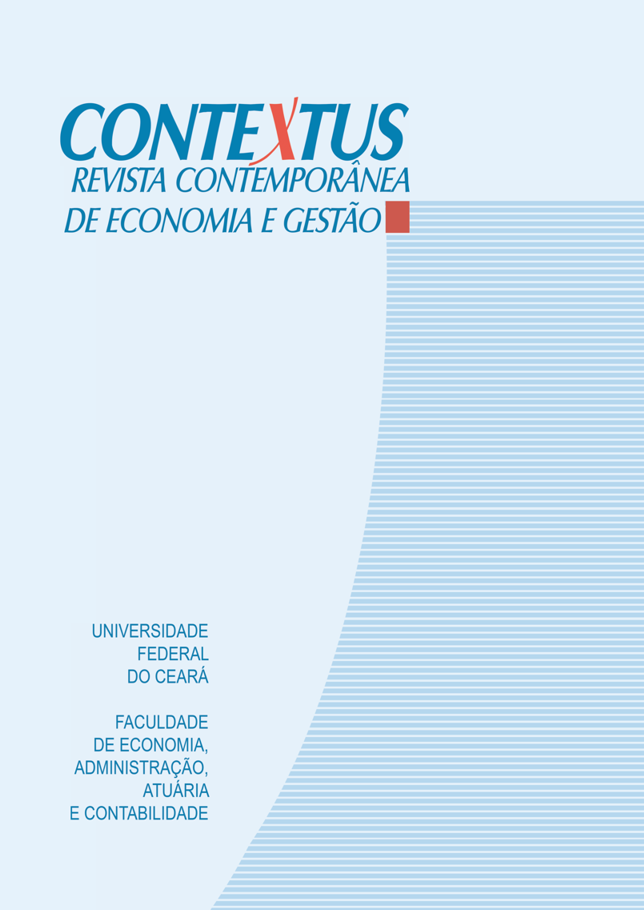








1.jpg)

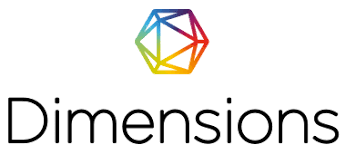

1.jpg)

1.jpg)

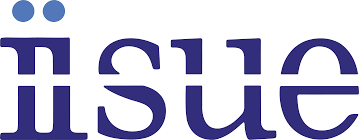

.jpg)


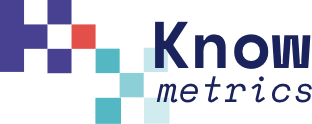
1.jpg)

1.jpg)


1.jpg)

1.jpg)
1.jpg)
2.png)




2.jpg)
1.jpg)



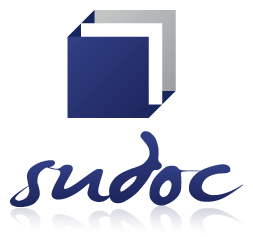
1.jpg)


1.jpg)
1.jpg)
